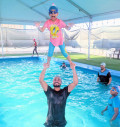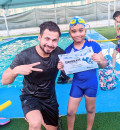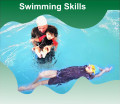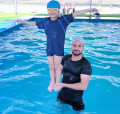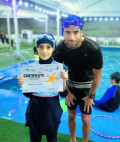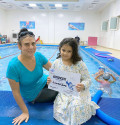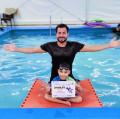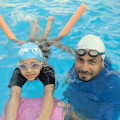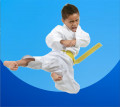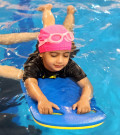
Butterfly Stroke for Kid in swimming
2024-03-09 - swimmingSwimming is not just a valuable life skill; it's also a
fantastic form of exercise that promotes physical fitness and mental
well-being. Among the various swimming strokes, the butterfly stroke stands out
for its elegance and power. While it may seem daunting at first, teaching kids
the butterfly stroke can be an enriching experience that enhances their
swimming abilities and boosts their confidence in the water.
Introduction to Butterfly Stroke
The butterfly stroke is renowned for its graceful yet
dynamic movement, resembling the fluttering of butterfly wings. It involves
simultaneous arm movements and an undulating body motion, requiring strength,
coordination, and proper technique.
Benefits of Learning Butterfly Stroke for Kids
Learning the butterfly stroke offers numerous benefits for
children:
Full-body Workout: The butterfly stroke engages
multiple muscle groups, promoting overall strength and endurance.
Improved Technique: Mastering the butterfly stroke
helps refine swimming technique and enhances efficiency in the water.
Confidence Boost: Successfully learning a challenging
stroke like the butterfly instills confidence and a sense of accomplishment in
children.
Enhanced Coordination: Coordinating the arm and leg
movements in the butterfly stroke improves overall coordination and motor
skills.
Basic Technique of Butterfly Stroke
Body Position
To execute the butterfly stroke effectively, the swimmer
must maintain a streamlined body position, with the torso positioned close to
the water's surface.
Arm Movement
The arm movement in the butterfly stroke involves a
simultaneous motion of both arms, resembling the shape of a keyhole. The arms
move in a circular motion, with the hands entering the water above the head and
pushing downward and outward in a sweeping motion.
Leg Movement
The leg movement in the butterfly stroke consists of a
powerful dolphin kick, where both legs move in unison, generating propulsion by
creating a wave-like motion.
Tips for Teaching Kids the Butterfly Stroke
Teaching kids the butterfly stroke requires patience,
encouragement, and effective instructional methods.
Break Down the Stroke
Break down the butterfly stroke into manageable steps,
allowing children to practice each component separately before integrating them
into the full stroke.
Common Mistakes to Avoid
When teaching kids the butterfly stroke, it's essential to
be aware of common mistakes and address them promptly to prevent bad habits
from forming. Some common mistakes include improper body position, incomplete
arm extension, and inefficient leg kick.
Safety Precautions for Kids Learning Butterfly Stroke
Safety should always be a top priority when teaching kids to
swim, especially when introducing more advanced strokes like the butterfly.
Ensure that children are supervised by qualified instructors and that they swim
in designated areas with lifeguards present.
Exercises to Improve Butterfly Stroke
Incorporate specific exercises and drills into swimming
lessons to help children strengthen the muscles required for the butterfly stroke.
Exercises such as dolphin kick drills, arm strengthening exercises, and core
stability exercises can enhance technique and performance.
Fun Games to Enhance Learning
Make learning the butterfly stroke enjoyable by
incorporating fun games and activities into swimming lessons. Games like
"Butterfly Relay" and "Dolphin Kick Races" not only make
learning fun but also reinforce essential skills and techniques.
Building Endurance and Strength
Swimming laps and practicing the butterfly stroke regularly
can help children build endurance and strength over time. Gradually increase
the duration and intensity of swimming sessions to challenge and improve their
abilities.
Celebrating Progress
Celebrate children's progress and achievements along their
swimming journey, whether it's mastering a specific technique or completing a
certain distance. Positive reinforcement boosts confidence and motivation,
encouraging continued improvement.
Overcoming Challenges
Acknowledge that learning the butterfly stroke can be
challenging and may take time for children to master. Encourage perseverance
and resilience, emphasizing that progress comes with practice and
determination.
Importance of Patience and Persistence
Teaching kids the butterfly stroke requires patience on the
part of both instructors and parents. Encourage children to be patient with
themselves and to persevere through difficulties, knowing that improvement
comes with time and effort.
Conclusion
Teaching kids the butterfly stroke requires patience,
dedication, and effective instructional methods. By following proper
techniques, providing encouragement, and fostering a love for swimming,
children can master the butterfly stroke with confidence and skill.







.jpg)















































